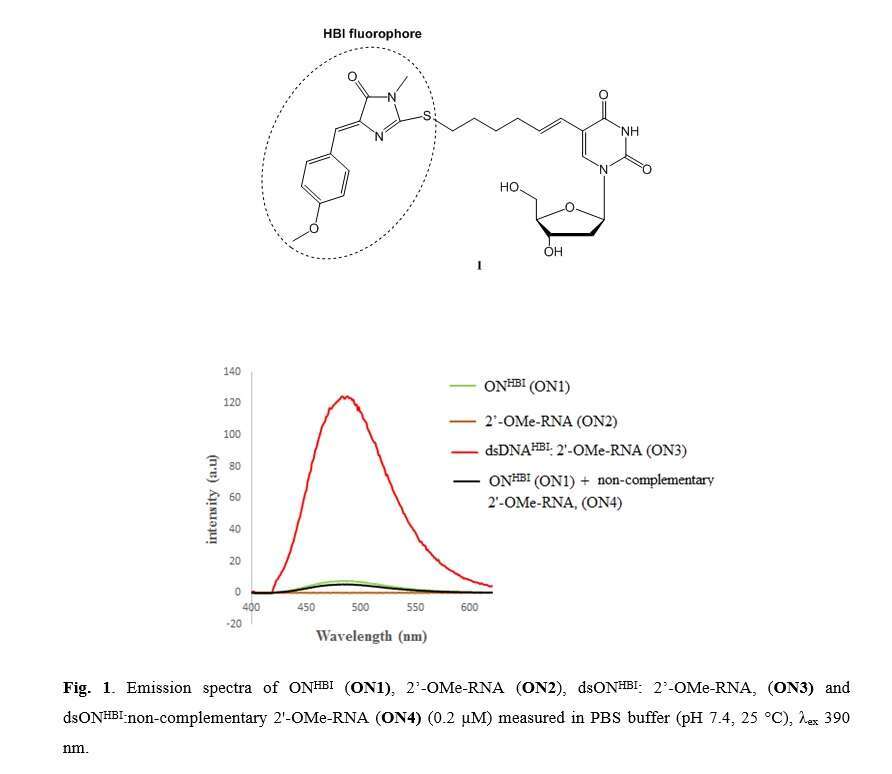
An oligonucleotide probe incorporating the chromophore of green fluorescent protein is useful for the detection of HER-2 mRNA breast cancer marker
2Department of Pharmacy, Pharmaceutical and Medicinal Chemistry, Saarland University, Saarbrücken, Germany
3Faculty of Life Sciences & Institute of Nanotechnology, Bar-Ilan University, Ramat-Gan, Israel
Diagnosis and treatment of breast cancer can be greatly enhanced and personalized based on the quantitative detection of mRNA markers. Here, we targeted the development of a fluorescent oligonucleotide probe to detect specifically the HER-2 mRNA breast cancer marker.1 We have selected the chromophore of the Green Fluorescent Protein (GFP), 4-hydroxybenzylidene imidazolinone (HBI), as a fluorophore covalently bound to an oligonucleotide probe and potentially capable of intercalating within a probe-RNA duplex. We first synthesized the two-ring scaffold of the HBI chromophore and coupled it to 2`-deoxyuridine at C5-position via a 7-atom-spacer, to give 1. Indeed, in the highly viscous glycerol used to mimic the reduced conformational flexibility of the intercalated HBI, chromophore 1 displayed a quantum yield of 0.29 and brightness of 20600 M-1cm-1, while no fluorescent signal was observed in methanol. Next, we synthesized a 20-mer oligonucleotide probe incorporating 1 at position 6 (5`-CCCGTUTCAACAGGAGTTTC-3`), ONHBI, (ON1) targeting nucleotides 1233–1253 of HER-2 mRNA, (ON2). A 16-fold enhancement of (ON1) emission intensity upon hybridization with the complementary RNA (ON2) vs that of the non complimentary oligonucleotide probe (ON4) indicated the presence of the target oligonucleotide (quantum yield 0.52; brightness 23500 M-1cm-1). The intercalative binding mode of the HBI fluorophore was demonstrated by circular dichroism. Furthermore, an 11-fold enhancement of (ON1) emission (quantum yield 0.50; brightness 23200 M-1cm-1) was observed when the probe was mixed with total RNA extract from a human cell line that has high levels of HER2 mRNA expression. Thus, we propose ONHBI as a promising probe potentially useful for the sensitive and specific detection of HER2 mRNA breast cancer marker.
Saady, A.; Böttner, V.; Meng, M.; Varon, E.; Shav-Tal, Y.; Ducho, C.; Fischer, B., An oligonucleotide probe incorporating the chromophore of green fluorescent protein is useful for the detection of HER-2 mRNA breast cancer marker. Eur. J. Med. Chem 173 (2019) 99-106.
Powered by Eventact EMS
